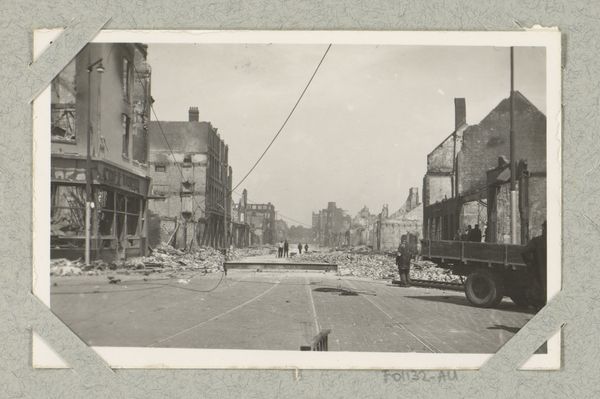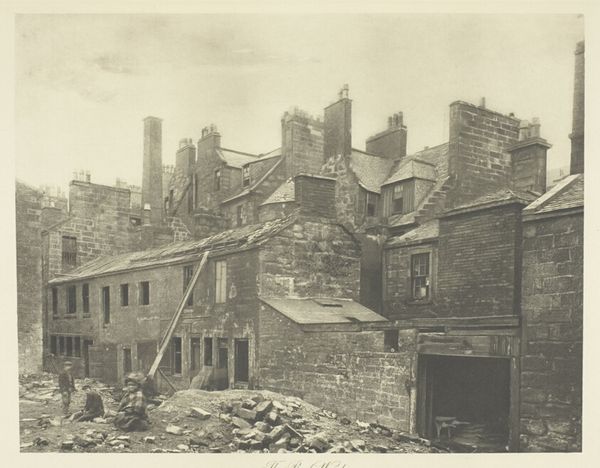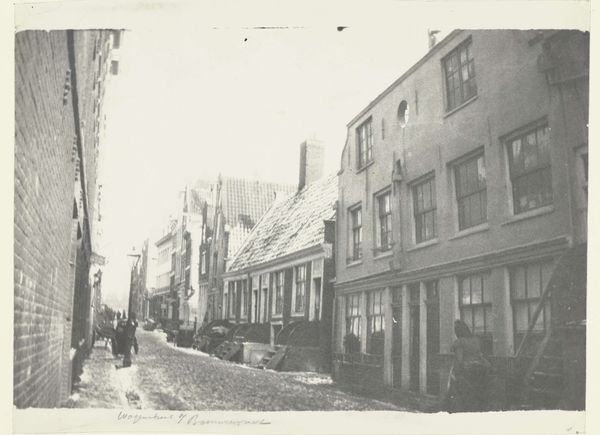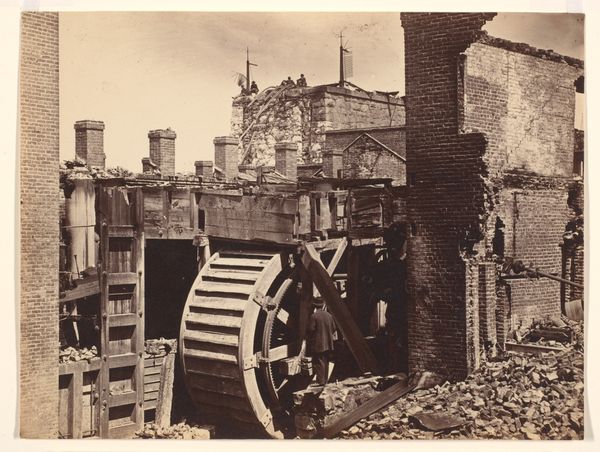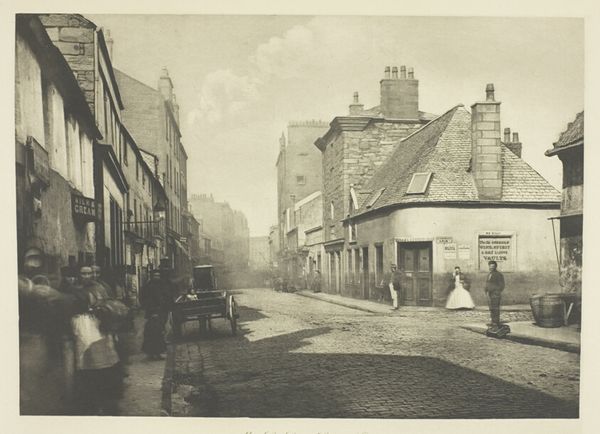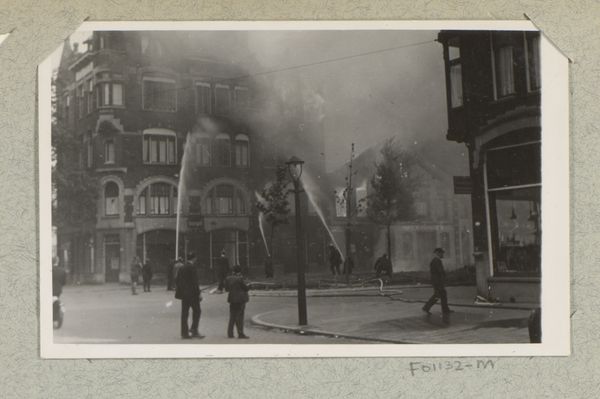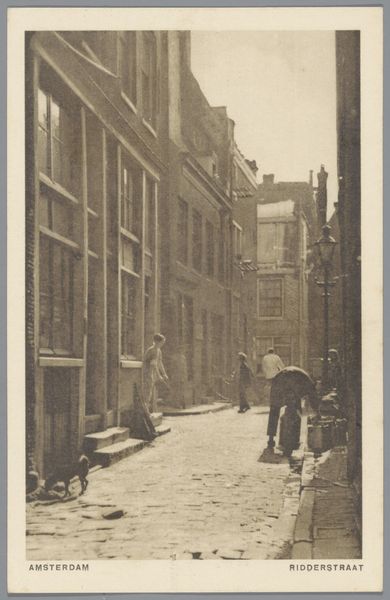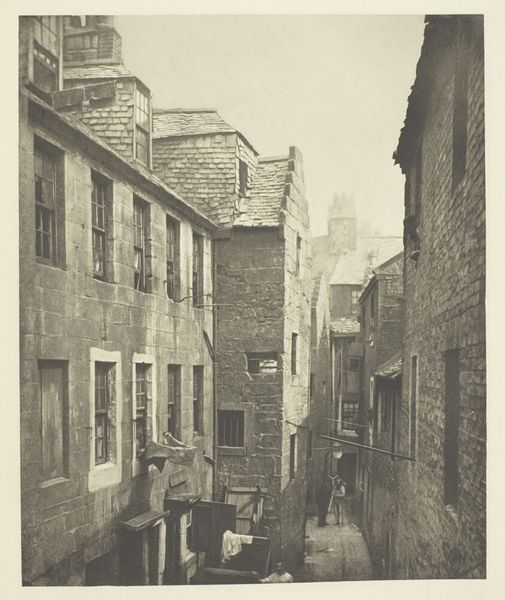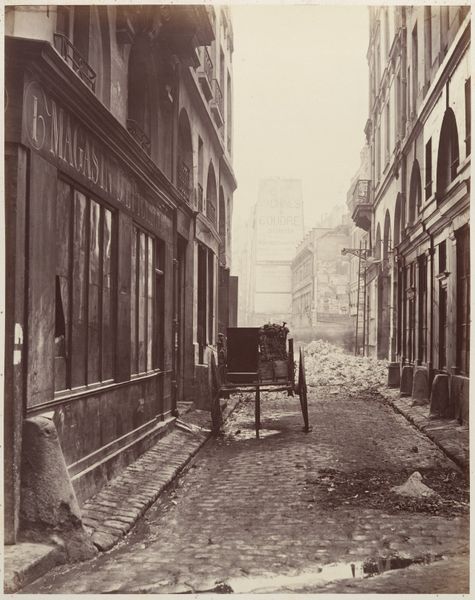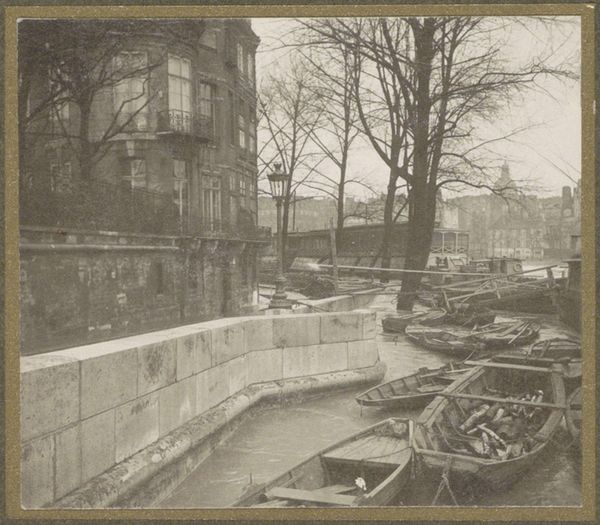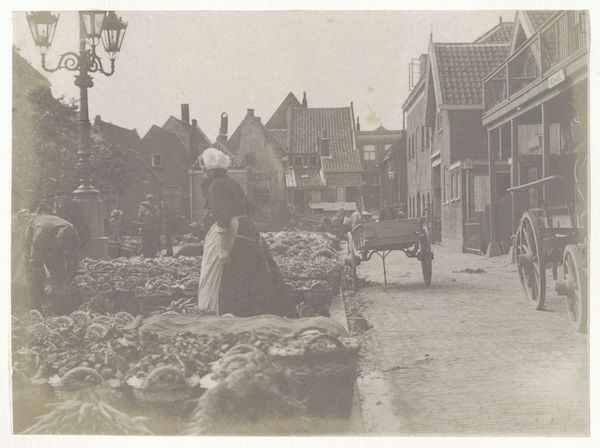
Bouwvakkers in en op een bouwput aan de Nieuwendijk in Amsterdam c. 1890 - 1910
0:00
0:00
photography
#
black and white photography
#
dutch-golden-age
#
landscape
#
street-photography
#
photography
#
monochrome photography
#
cityscape
#
genre-painting
#
realism
#
monochrome
Dimensions: height 505 mm, width 402 mm, height 400 mm, width 272 mm
Copyright: Rijks Museum: Open Domain
Editor: Here we have George Hendrik Breitner’s “Construction Workers in and on a Construction Pit on the Nieuwendijk in Amsterdam,” a photograph from around 1890 to 1910. It’s striking how the activity in the pit contrasts with the looming buildings. What historical context informs your interpretation of this piece? Curator: This photograph provides a compelling snapshot of urban transformation, but also the social stratifications inherent within. Consider Amsterdam during this period: rapid industrialization coupled with a stark disparity between the wealthy merchants and the working class. How do you think Breitner positions these workers within the narrative of Amsterdam's progress? Editor: I guess they appear sort of anonymous and consumed by their labour, yet the picture also conveys some dynamism despite being still. Are they symbols of urban progress, or rather victims of industrial society? Curator: Exactly. Breitner was interested in capturing everyday life and wasn't necessarily interested in idealizing it. The image highlights the physicality of their labor, devoid of romanticism. The dark pit where these workers stand, does that conjure to your mind any social commentaries? Does that reflect on race or social hierarchy in any way? Editor: It brings attention to the hard labor and the contrast in working class conditions compared to the lives of those who would occupy these spaces. Maybe the unseen majority enabling prosperity of a few, is this what Breitner captured? Curator: Indeed. It makes us consider questions of labor, class, and the hidden costs of urbanization, resonating far beyond its time. This photograph becomes an entry point to wider dialogues on social equity and the portrayal of the working class. Editor: Thinking about it that way adds layers to what I initially saw. I now have to consider how images reflect the power dynamics of the time. Curator: Precisely. This challenges us to continuously interrogate historical narratives through a contemporary lens, amplifying voices that were previously marginalized.
Comments
No comments
Be the first to comment and join the conversation on the ultimate creative platform.
